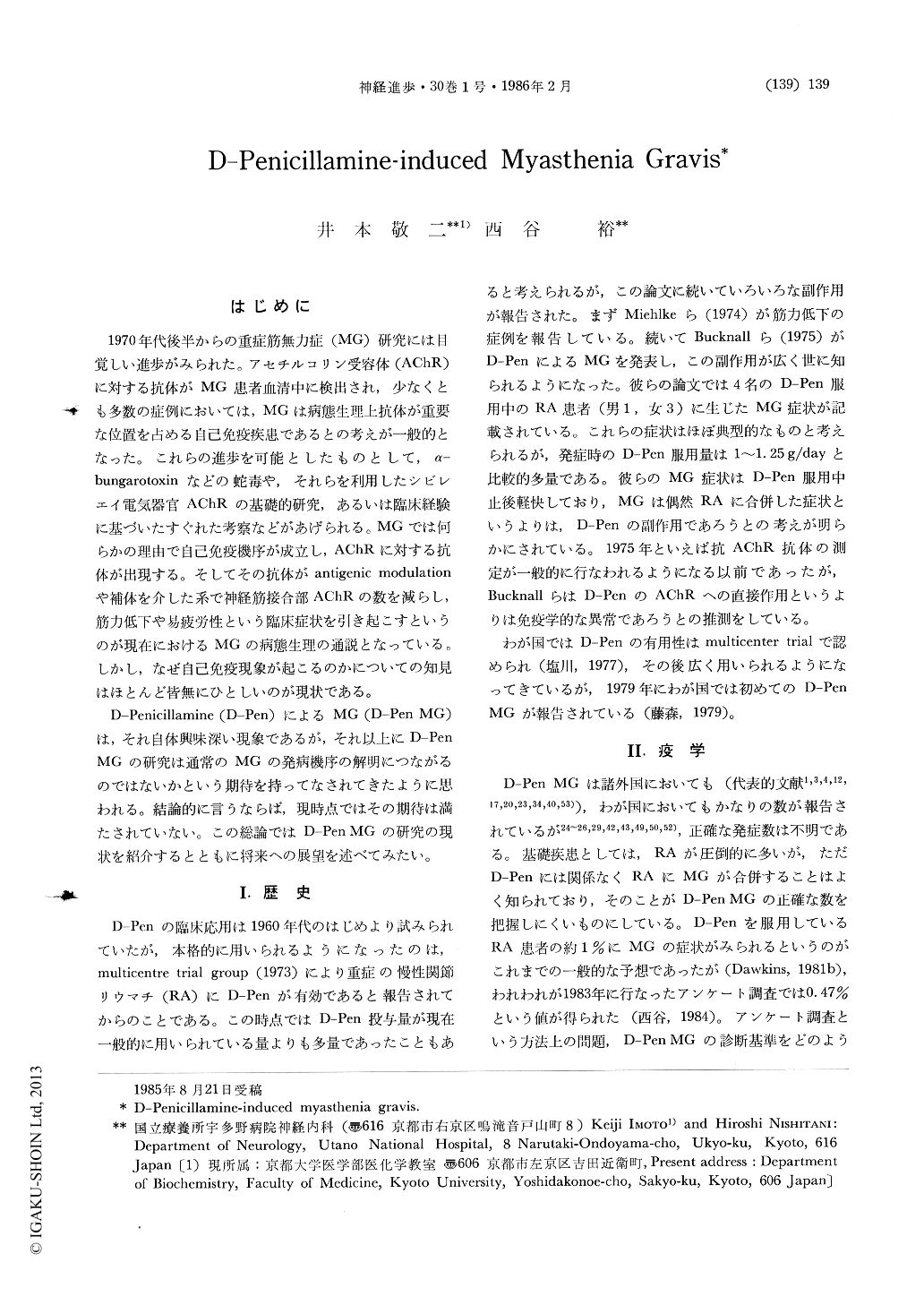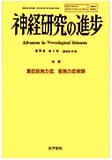Japanese
English
- 有料閲覧
- Abstract 文献概要
- 1ページ目 Look Inside
はじめに
1970年代後半からの重症筋無力症(MG)研究には目覚しい進歩がみられた。アセチルコリン受容体(AChR)に対する抗体がMG患者血清中に検出され,少なくとも多数の症例においては,MGは病態生理上抗体が重要な位置を占める自己免疫疾患であるとの考えが一般的となった。これらの進歩を可能としたものとして,α-bungarotoxinなどの蛇毒や,それらを利用したシビレエイ電気器官AChRの基礎的研究,あるいは臨床経験に基づいたすぐれた考察などがあげられる。MGでは何らかの理由で自己免疫機序が成立し,AChRに対する抗体が出現する。そしてその抗体がantigenic modulationや補体を介した系で神経筋接合部AChRの数を減らし,筋力低下や易疲労性という臨床症状を引き起こすというのが現在におけるMGの病態生理の通説となっている。しかし,なぜ自己免疫現象が起こるのかについての知見はほとんど皆無にひとしいのが現状である。
D-Penicillamine(D-Pen)によるMG(D-Pen MG)は,それ自体興味深い現象であるが,それ以上にD-PenMGの研究は通常のMGの発病機序の解明につながるのではないかという期待を持ってなされてきたように思われる。結論的に言うならば,現時点ではその期待は満たされていない。この総論ではD-Pen MGの研究の現状を紹介するとともに将来への展望を述べてみたい。
Since the early case reports of D-penicillamine-induced myasthenia gravis (D-Pen MG) by Miehlke and by Bucknall, the study of D-Pen MG has been pursued in the hope that the understanding of this rare adverse effect of D-Pen may lead us to elucidation of the real cause of myasthenia gravis. Unfortunately, this has not become the case. It may be worth reviewing the recent progress on the research of D-Pen MG.
The accurate incidence of D-PenMG is unknown, but is estimated about 0.5% among the patients with rheumatoid arthritis taking D-Pen. The clinical manifestation of D-Pen MG is similar to that of spontaneous MG, except that the prognosis of D-Pen MG is generally better. In some cases, however, extensive therapy was necessary, and cases with thymic hyperplasia were also reported.

Copyright © 1986, Igaku-Shoin Ltd. All rights reserved.


